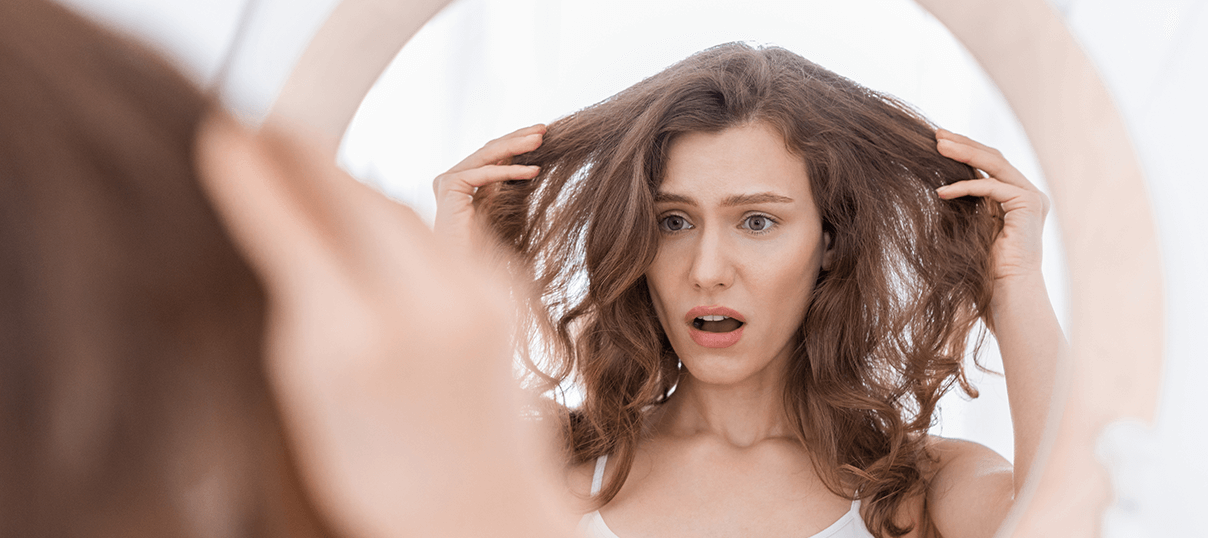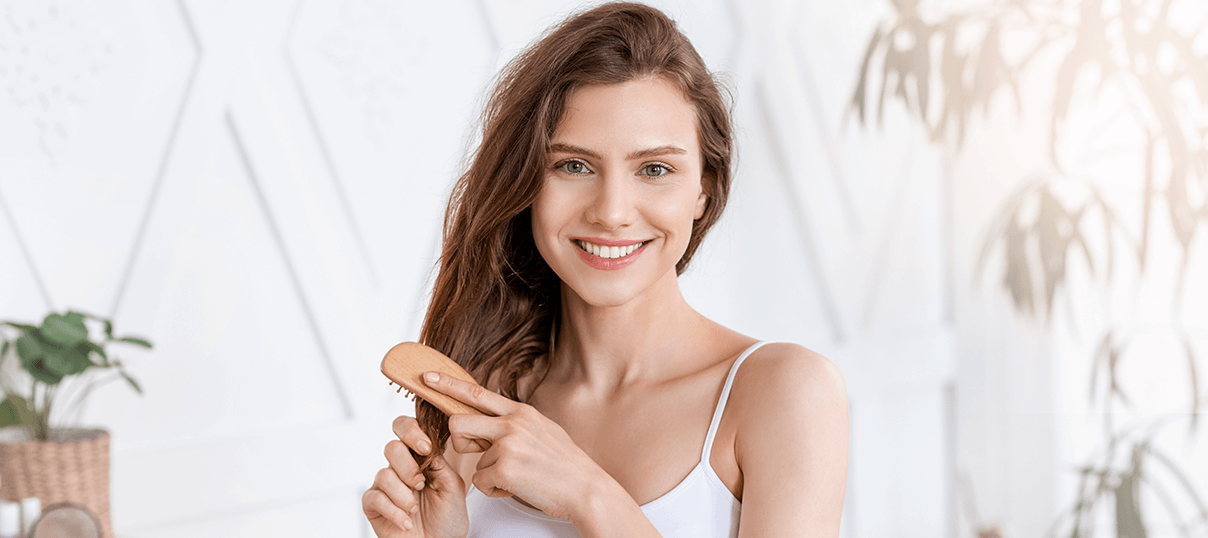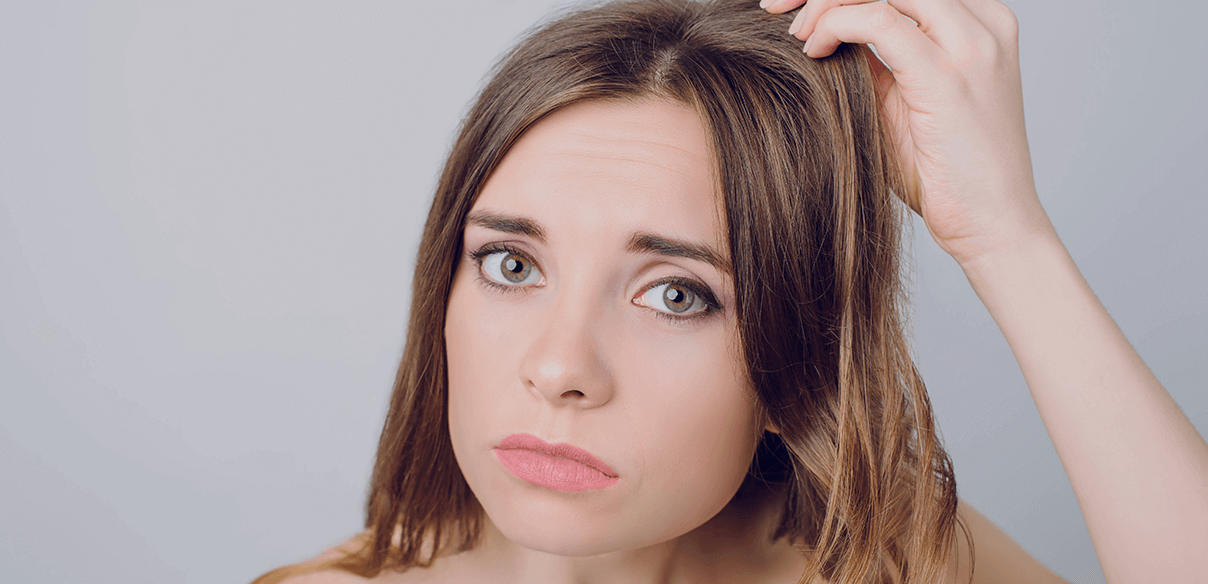Oily hair is characterised by greasy, heavy hair that clings to the scalp and it is the result of an imbalance in the scalp’s sebum secretions. Affecting approximately one in four people, this condition is common and often causes self-consciousness. Read our advice to restore lightness, shine and health to your hair.
Understanding oily hair
Like skin, hair is naturally covered in a hydrolipidic film composed of sebum and sweat from the sebaceous and sweat glands. This oily substance moisturises, nourishes and protects. It forms a natural barrier which protects the hair from damaging external factors. It is essential to keeping hair shiny and soft.
But occasionally, the sebaceous glands secrete excess sebum. This excess oil makes the hair heavy and gives it a greasy appearance. Just one day after washing, the hair clumps together and clings to the scalp. The scalp becomes irritated and itchy, because it cannot breathe. In most cases, hair is mainly oily at the roots: the rest of the hair can be normal or dry.
Oily hair is partly genetic (and therefore hereditary), but the condition can be worsened by other factors such as:
• stress, emotional shock and fatigue,
• obesity,
• unsuitable shampoos or constant hair dyeing,
• an unbalanced diet that is too high in fat and sugar,
• excessive alcohol consumption,
• hormonal fluctuations,
• certain drug therapies and contraceptive pills.

Caring for oily hair
• Wash your hair as soon as it feels dirty or your scalp feels itchy, using a mild shampoo specially formulated for oily hair. Use a small quantity and dilute it properly before applying it to your hair. Gently massage your scalp, being careful to avoid scratching yourself with your nails, as this could trigger sebum production.
• Do not use baby shampoo: while these products are very mild, they are generally lipid-enriched. This makes them useful for baby hair but completely unsuitable for oily adult hair.
• Avoid shampooing your hair twice in a row: one wash is enough to get your hair clean. The second would be too harsh on your hair and trigger excess sebum secretion.
• If you use hair conditioner or a nourishing treatment, make sure to apply it to the ends only, carefully avoiding your hair’s roots.
• Rinse your hair thoroughly with warm or cool water: avoid hot water, as it stimulates the sebaceous glands. Then dry your hair gently with a soft towel. Do not rub.
• Once a week, apply a clay mask to your hair: this traditional home remedy helps to keep your scalp clean and healthy.
• Eat a balanced diet including lots of fresh fruit and vegetables, but also vitamin B6, which regulates sebum production. You can find the latter in foods such as poultry, liver, potatoes, bananas, cabbage and spinach. By the same token, reduce your consumption of alcohol, saturated fats (cured pork meats, rich sauces, pastries and cakes), refined sugars and spicy foods.
•Avoid hair dyes, perms, crimpers and hair straighteners, as these damage the hair and can trigger excessive sebum production as a reaction (reactional hyperseborrhoea).
• Let your hair dry naturally as often as possible. If using a hair dryer, place it a good distance away from your hair and opt for a warm or cold setting.
• If these measures do not restore your hair to good health, consider seeing a skin specialist.



